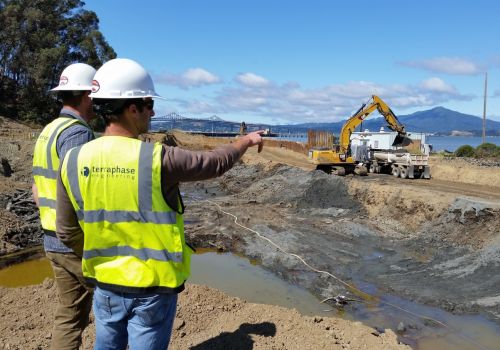In the world of construction and engineering, where intricate designs and grand structures stand tall, there comes a time when even the mightiest of creations require a helping hand to maintain their splendor. This is where the realm of remedial engineering steps in, weaving together innovation, expertise, and problem-solving prowess to breathe new life into aging or damaged structures. From revitalizing historical landmarks to reinforcing the foundations of modern marvels, the journey of remedial engineering is a captivating saga of restoration and renewal.
Understanding the Essence of Remedial Engineering
Remedial engineering, often referred to as structural rehabilitation, embodies the discipline of analyzing, diagnosing, and implementing solutions to repair, strengthen, and enhance the structural integrity of buildings and infrastructure. It’s akin to the work of a skilled physician, examining the ailment, diagnosing the root cause, and then devising a tailored treatment plan.
At its core, remedial engineering is a harmonious blend of scientific knowledge, engineering principles, and artistic innovation. It takes into account various factors such as structural deterioration, environmental impacts, and material degradation, weaving them together to orchestrate a symphony of rejuvenation.
The Diagnostic Prelude: Unveiling the Challenges
Before embarking on the journey of remediation, a thorough assessment is paramount. Remedial engineers meticulously inspect the structure, probing for telltale signs of distress – cracks, corrosion, and degradation. Just as a physician listens to a patient’s history, these engineers delve into the history of the structure to unravel the story of its journey and the adversities it has weathered.
But the challenges often run deeper than what meets the eye. Unlike a human patient, structures cannot convey their discomfort directly. Hence, remedial engineers employ an arsenal of tools, from non-destructive testing to advanced imaging techniques, to unveil the underlying issues. This amalgamation of technology and intuition leads to a comprehensive understanding of the structure’s condition.
Innovative Solutions: Where Science Meets Artistry
Once the challenges are laid bare, the realm of innovative solutions comes into play. Remedial engineers don the hat of both scientists and artists, utilizing their expertise to devise methodologies that not only rectify the issues but also enhance the structure’s resilience and aesthetic appeal.
In an era where sustainability reigns supreme, these engineers explore novel materials and techniques that not only restore but also breathe new life into structures. From carbon fiber wraps that provide unparalleled reinforcement to eco-friendly coatings that protect against corrosion, each solution is carefully curated to marry functionality with sustainability.
The Tapestry of Implementation: Skillful Hands at Work
The implementation phase of remedial engineering is a symphony of skillful hands at work. It’s the culmination of analytical thinking, creativity, and engineering excellence. This is where the blueprint comes to life, and the structure begins its transformative journey.
Consider the preservation of a historic bridge that has stood the test of time but now requires a helping hand. Remedial engineers evaluate the bridge’s load-bearing capacity, seismic resilience, and material integrity. They then map out a plan that balances the preservation of its heritage with the incorporation of modern safety standards.
As the restoration unfolds, the bridge may witness an infusion of advanced composite materials, a careful touch-up of its iconic architectural elements, and meticulous corrosion protection. The result is not just a bridge restored to its former glory but one fortified to brave the challenges of the future.
Beyond Repairs: Fostering Longevity
The artistry of remedial engineering extends beyond immediate repairs. It embraces the vision of fostering longevity, ensuring that the structures not only survive but thrive for generations to come. This is achieved through a combination of preventative measures, ongoing monitoring, and periodic maintenance.
Just as a medical patient is advised on a healthy lifestyle post-recovery, structures are equipped with strategies to combat future adversities. Regular health check-ups, in the form of structural assessments and monitoring, help identify potential issues before they escalate, enabling timely interventions.
In Conclusion: A Symphony of Restoration
Remedial engineering, a convergence of scientific precision and artistic ingenuity, stands as a testament to human capability. It is the art of breathing new life into structures that have stood witness to history, and it is the science of fortifying modern marvels against the tests of time.
In an ever-evolving world, where the interplay of heritage and innovation is ceaseless, remedial engineering emerges as the guardian of structural resilience. Just as a skilled surgeon mends a broken bone, these engineers mend the foundations of our built environment, stitching together the past, present, and future with an unwavering dedication to structural vitality.
So, the next time you marvel at a restored monument or cross a bridge that has spanned centuries, remember that beneath the surface lies the heartbeats of remedial engineering – a symphony of restoration that echoes through time.







Be First to Comment